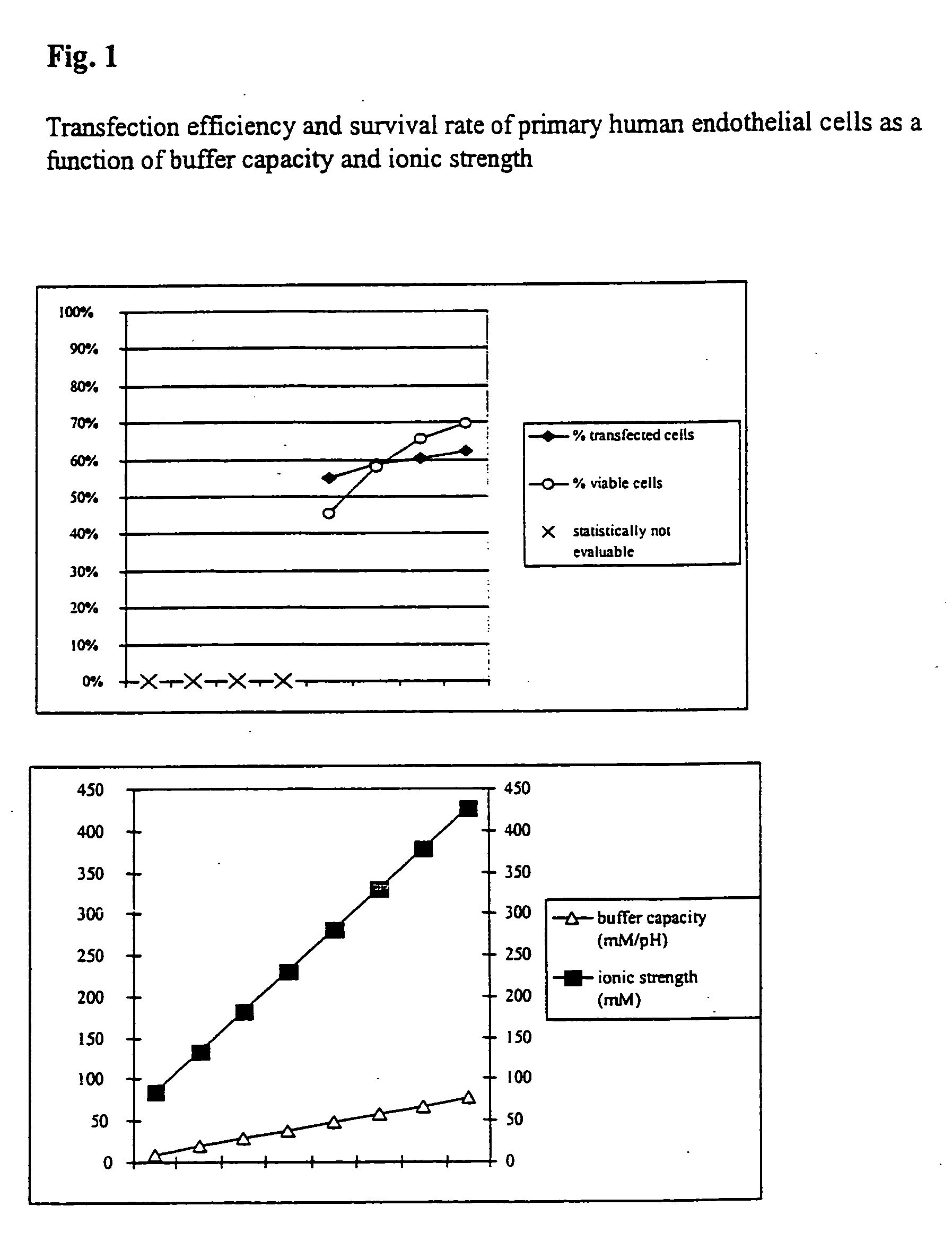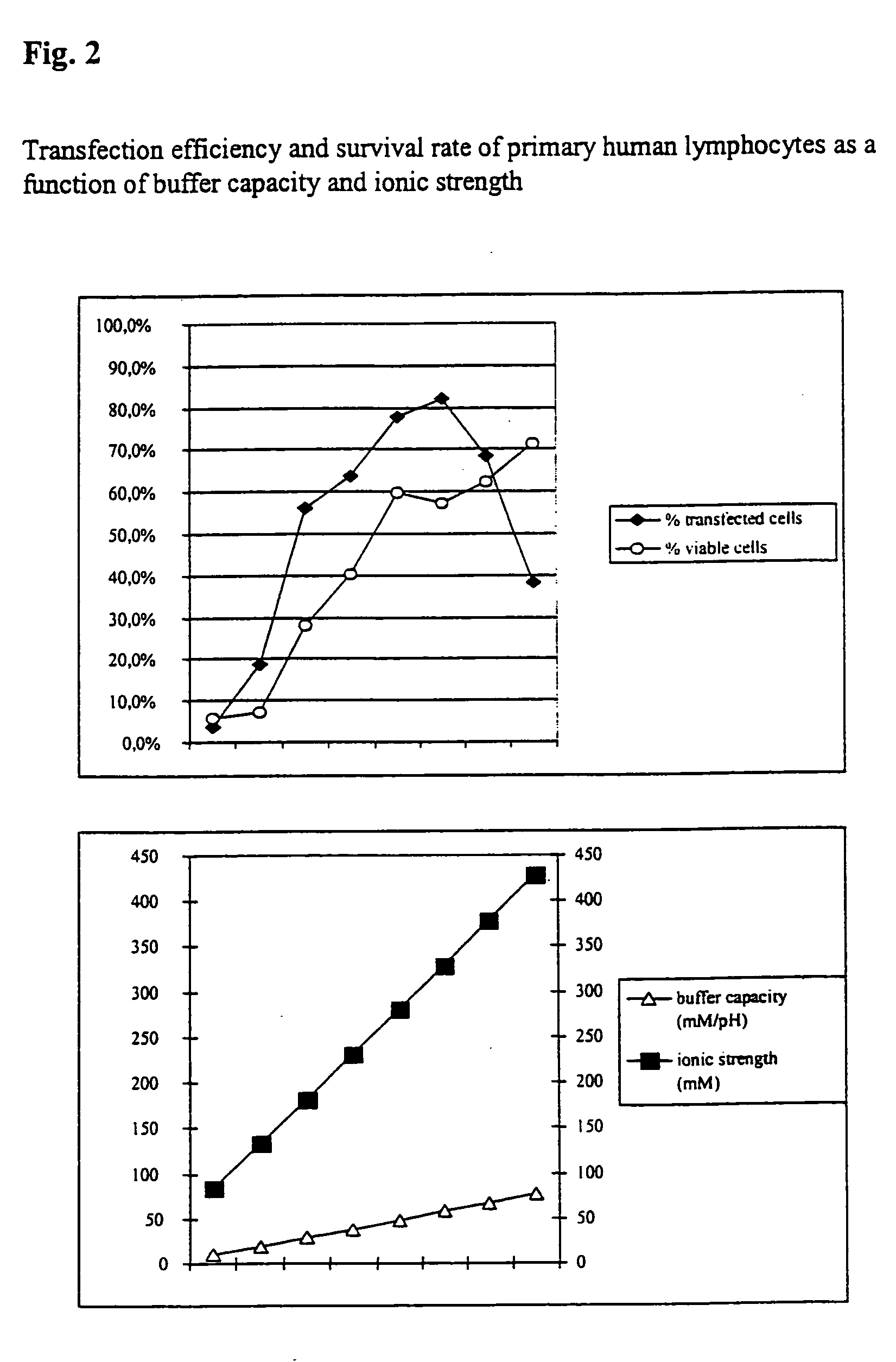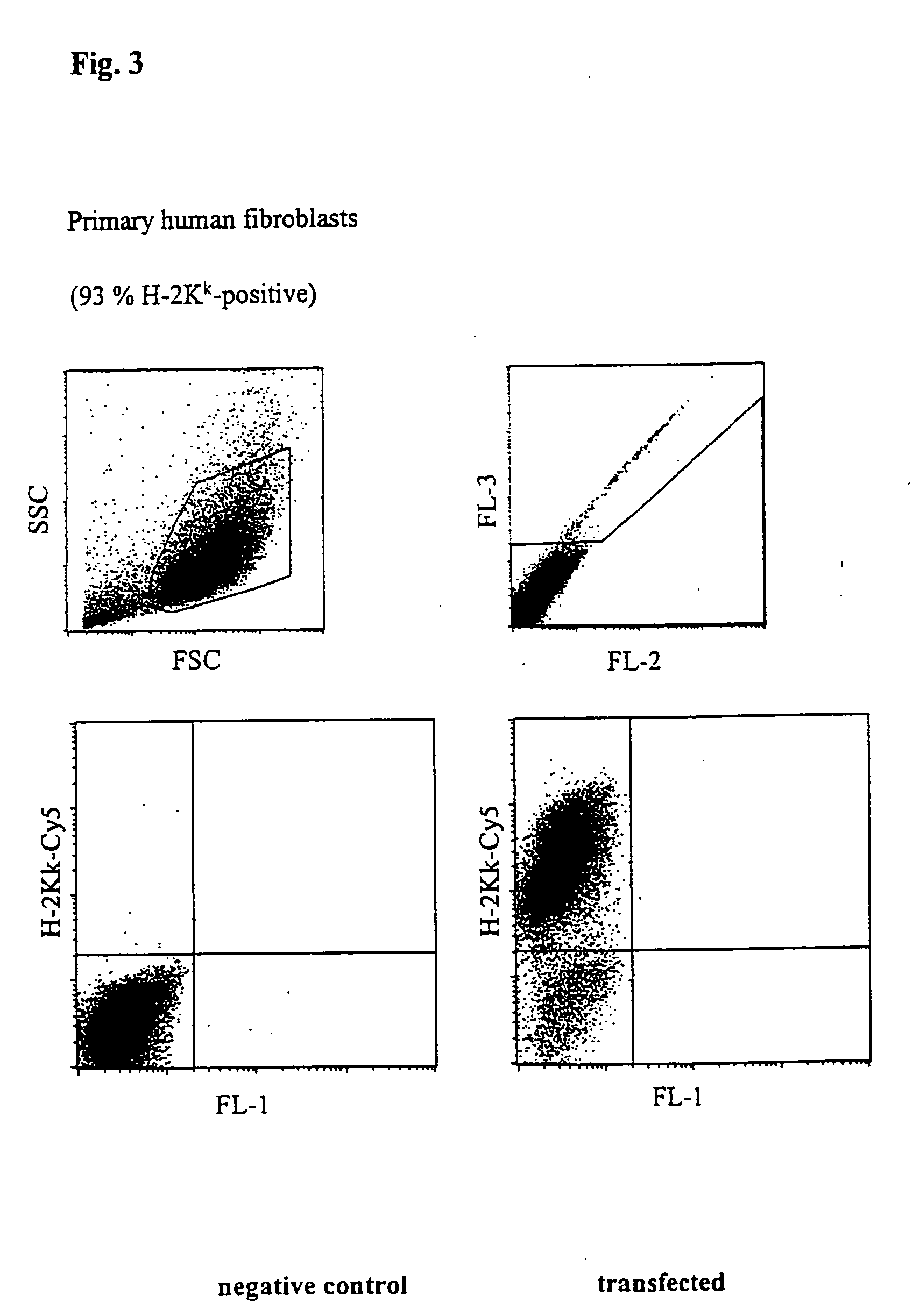Buffer solution for electroporation and a method comprising the use of the same
a buffer solution and electroporation technology, applied in the direction of biocide, animal repellents, peptide/protein ingredients, etc., can solve the problems of not being able to use corresponding methods, at least very tedious, and particular problems frequently occurring, etc., to achieve non-buffered or weakly buffered
- Summary
- Abstract
- Description
- Claims
- Application Information
AI Technical Summary
Benefits of technology
Problems solved by technology
Method used
Image
Examples
example 1
Transfection Efficiency and Survival rate of Primary Human Endothelial Cells
[0043] In order to study the transfection and survival rate of cells during electrotransfection as a function of the buffer capacity and the ionic strength, primary human endothelial cells were transfected with a vector coding for the heavy chain of the mouse MHC class 1 protein H-2Kk.
[0044] Respectively 7×105 cells with respectively 5 μg vector DNA and the respective electrotransfection buffer were placed at room temperature in a cuvette having an interelectrode gap of 2 mm and transfected by a 1000 V pulse of 100 μs duration. In addition, comparative values were determined using PBS (Phosphate Buffered Saline: 10 mM sodium phosphate, pH 7.2+137 mM NaCl, ionic strength=161.5 mM, buffer capacity=4.8 mM / pH). Directly after the electrotransfection the cells were washed out of the cuvette using 400 μl of culture medium, incubated for 10 minutes at 37° C. and then transferred to a culture dish with pre-heated...
example 2
Transfection Efficiency and Survival Rate of Primary Human Lymphocytes
[0045] Furthermore, the transfection and survival rate of primary human lymphocytes during electrotransfection was studied as a function of the buffer capacity and the ionic strength.
[0046] For this purpose respectively 5×106 cells with respectively 5 μg H-2Kk-expression vector-DNA in the respective buffers were placed at room temperature in a cuvette having a 2 mm interelectrode gap and electrotransfected by a 1000 V, 100 μs pulse followed by a current flow having a current density of 4 A×cm−2 and 40 ms. In addition, comparative values were determined using PBS (ionic strength=161.5 mM, buffer capacity=4.8 mM / PH). The analysis was made after 16 hours. As can be seen from FIG. 2, it is clear that the survival rates of the cells increase as the buffer capacity and ionic strength of the buffer solutions used increases. In some cases significantly better values could be achieved compared with the comparative solut...
example 3
Transfection of Primary Human Fibroblasts
[0047]FIG. 3 shows a FACScan analysis of primary human fibroblasts transfected with H-2Kk expression vector. 5×105 cells with 5 μg vector DNA in buffer 6 from Table 1 were placed at room temperature in a cuvette having a 2 mm interelectrode gap and transfected by a 1000 V, 100 μs pulse followed by a current flow of 6 A×cm−2 and 33 ms. After incubating for 5 h, the cells were incubated with a Cy5-coupled anti-H-2Kk antibody and analysed using a flow cytometer (FACScalibur, Becton Dickinson). The number of dead cells was determined by staining with propidium iodide. 93% of the living cells expressed the H-2Kk antigen which corresponds to a very high transfection efficiency.
PUM
| Property | Measurement | Unit |
|---|---|---|
| temperature | aaaaa | aaaaa |
| pH | aaaaa | aaaaa |
| pH | aaaaa | aaaaa |
Abstract
Description
Claims
Application Information
 Login to View More
Login to View More - R&D
- Intellectual Property
- Life Sciences
- Materials
- Tech Scout
- Unparalleled Data Quality
- Higher Quality Content
- 60% Fewer Hallucinations
Browse by: Latest US Patents, China's latest patents, Technical Efficacy Thesaurus, Application Domain, Technology Topic, Popular Technical Reports.
© 2025 PatSnap. All rights reserved.Legal|Privacy policy|Modern Slavery Act Transparency Statement|Sitemap|About US| Contact US: help@patsnap.com



